Tasks
- Problem Set 2 due by Sunday
- First journal club discussion will take place next Thursday.
Today’s learning objectives
- Define supercoiling and give examples of how it can be changed.
- Explain how linking number, twist, and writhe are related.
- Compare the mechanisms by which ethidium bromide, DNase I, and type I and type II topoisomerases change DNA linking number.
ethidium bromide is used to visualize DNA.
Compared to digested(linear) DNA, undigested DNA will run further because it is more compact.
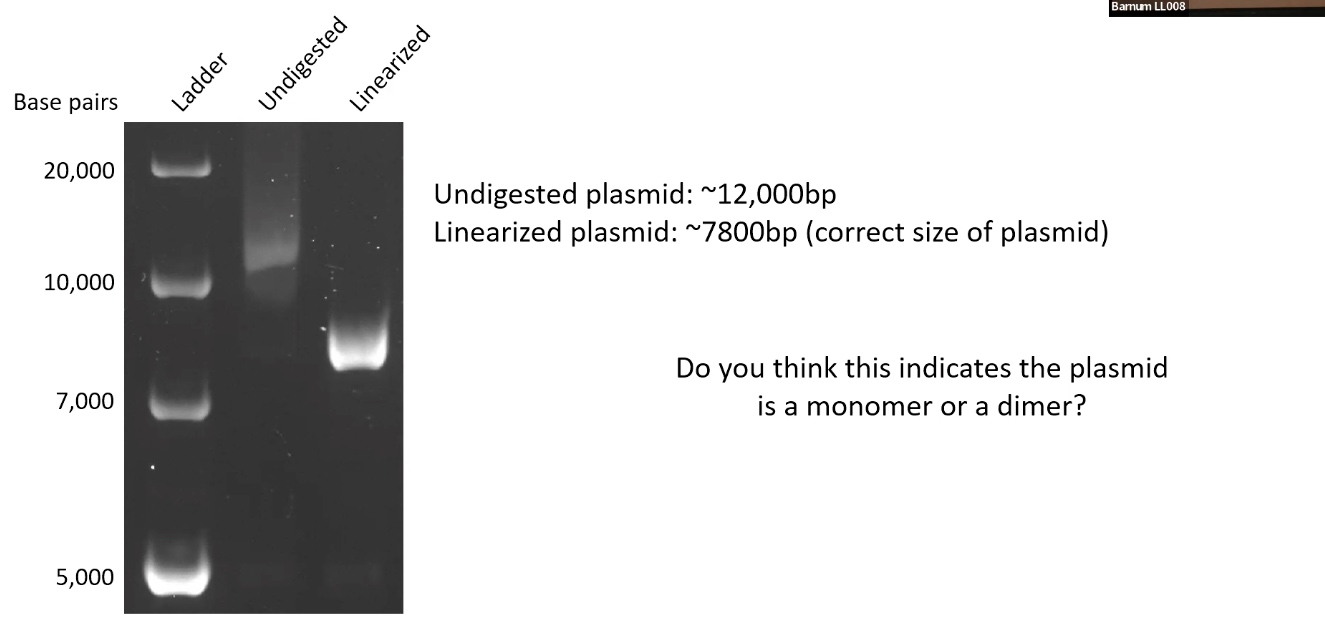
Monomer should be more compact than dimer. So monomer should run further than linearized plasmid. So this picture is a dimer since it is runing above the linearized plasmid.
After cutting the dimer into monomer, we still saw our undigested plasmid running above the linearized plasmid in all clones. What cause a monomer plasmid running above the linearized plasmid?
- Our plasmid has 100 GAA repeats, which are able to form a stable secondary structure(triplex.) Triplex DNA releases negative supercoils. (which means the twist do done, with Lk remains unchanged, the writhe will change from negative to neutral.)
- Plasmids isolated from bactrria usually have a superhelical dsneiry of around 0.05.

Plasmids isolated from bacteria usually have a superhelical density of around -0.05.(negatively supercoiled)
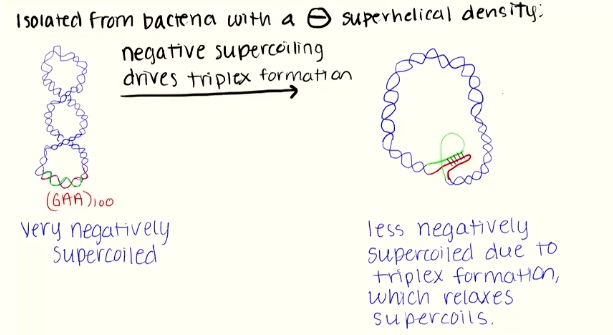
The triplex formed from (GAA)100 will relax the negatively supercoil.
Supercoiled plasmid will run slower than lineared one.
Supercoil is related to twist. EtBr can relax supercoil. When it is intercalated, the area is unwinded or flatten. But with the Lk unchanged, the writhe number will increase.
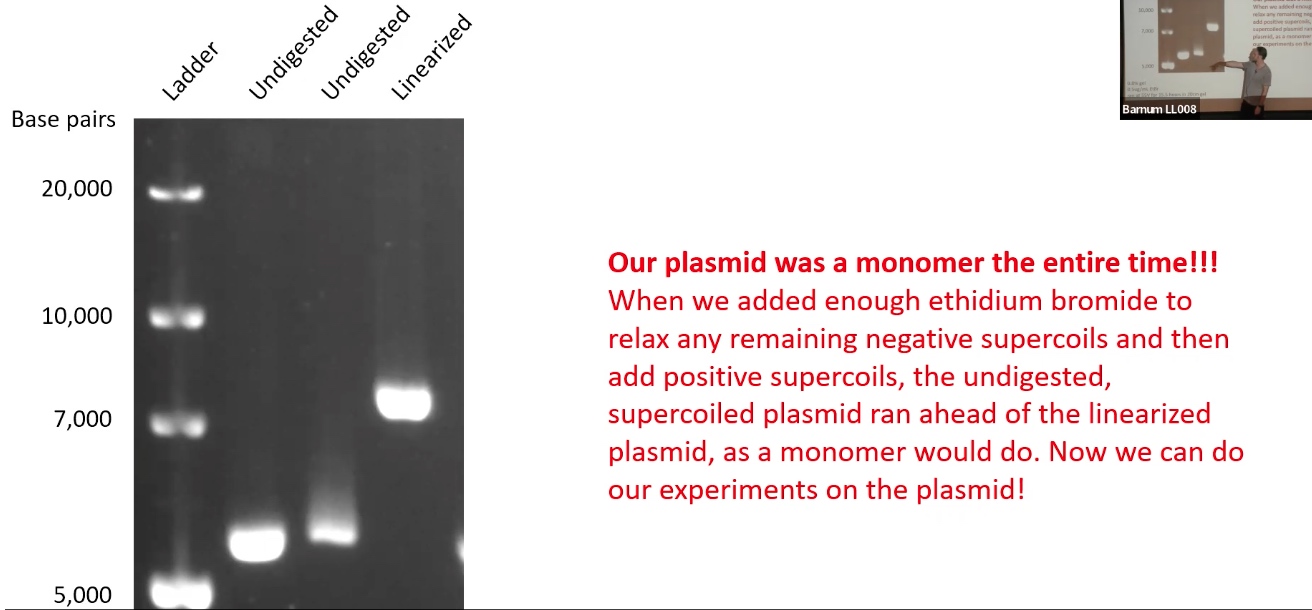
Ways to Alter Supercoiling
- Treat with an enzyme that nicks/cuts the DNA
- this relaxes all supercoils and makes Lk undefined
- Add intercalating agents (like ethidium bromide or chloroquine)
- this decreases twist and increases writhe
- intercalating agents do NOT change Lk
- can relax negative supercoils and create positive supercoils
- Topoisomerases
- enzymes that change Lk
Supercoiling DNA contains more energy.
DNase I can relax negative supercoiling
In Gel, Nicked DNA always runs the slowest.
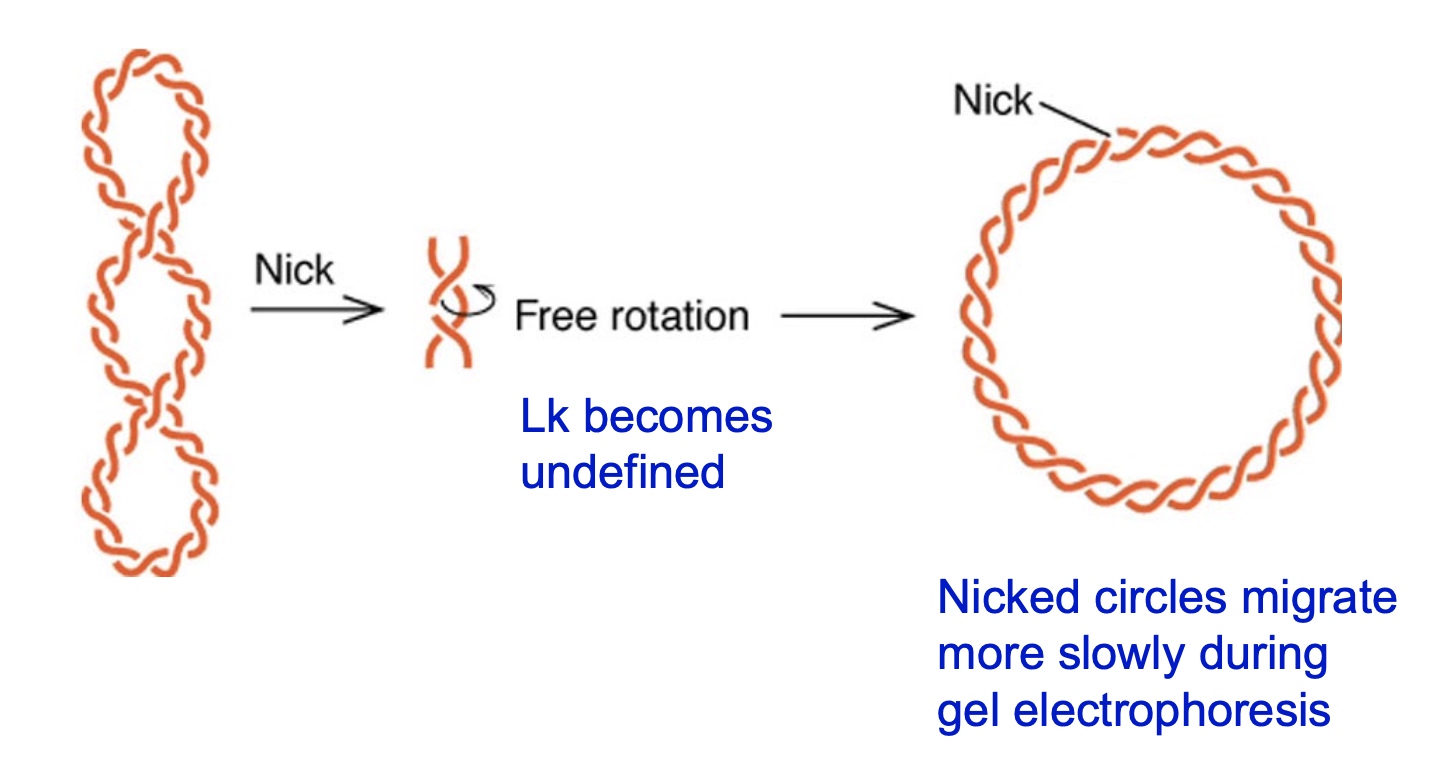
Ethidium bromide (EtBr) relaxes negative supercoils
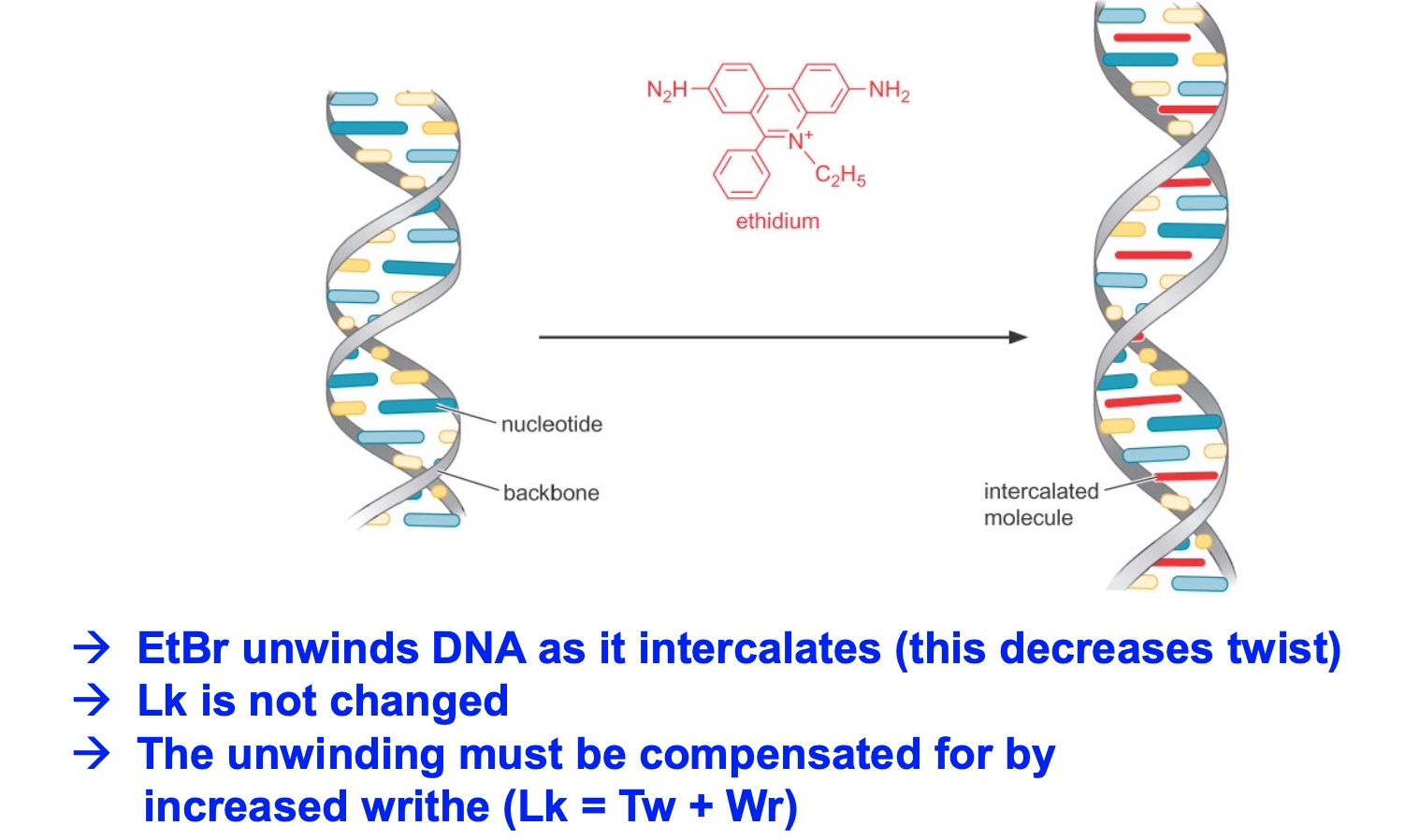
DNA supercoiling refers to the amount of twist in a particular DNA strand,
Topoisomerases
Type I
Lk going to change by 1, and the twist also change by 1. The writh will remain unchanged.
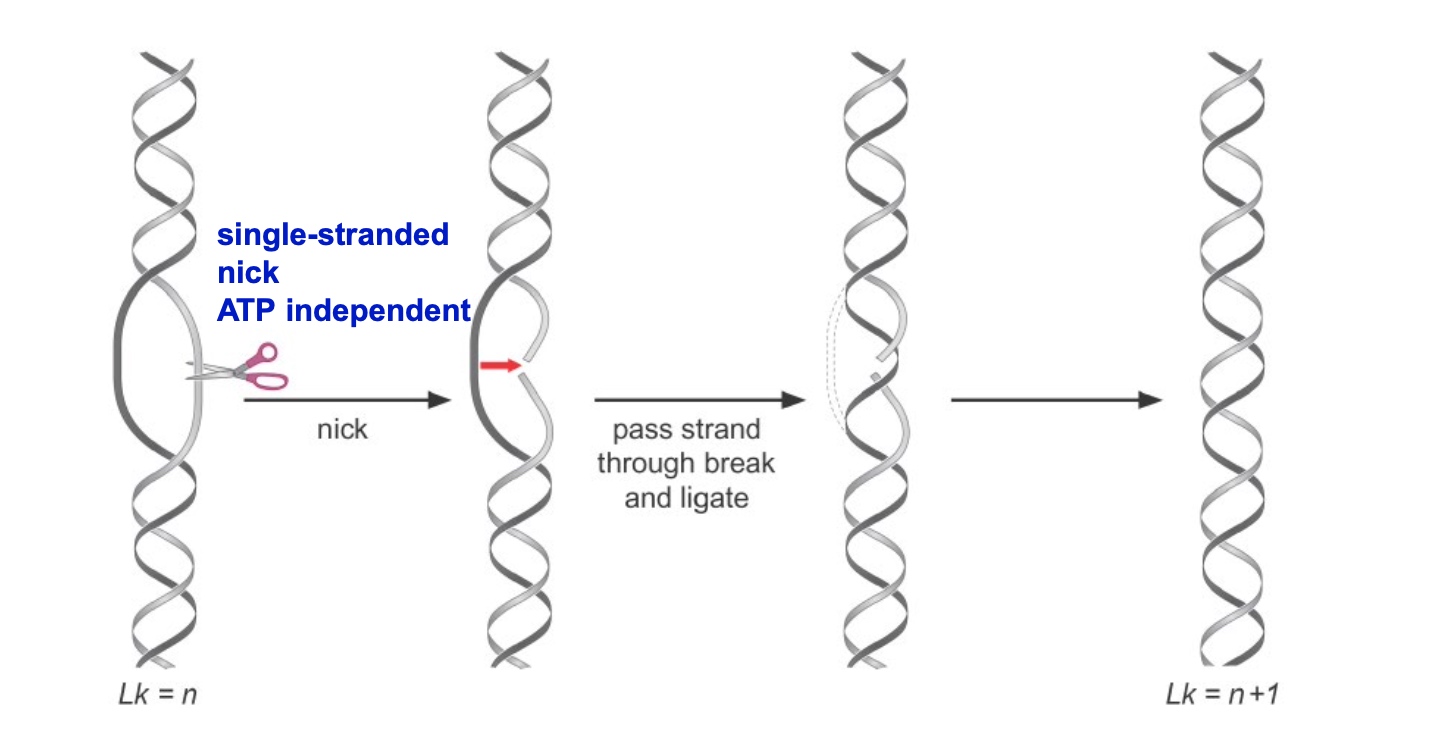
Type I will get energy from DNA tightness
Type II
- Require ATP hydrolysis
- Some Type II topoisomerases can only relax supercoiled DNA.
- Some can create supercoils.
- Others are also useful for separating entwined DNA double helices
topoisomerase inhibitors are used to inhibit the cancer cells' proliferation
